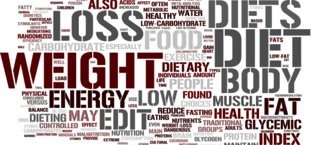Nutrition & Health Claims
The ground has shifted and you need to act now
New rules for nutrition and health claims
 |
You may already be aware of the new rules about nutrition and health claims made under the Australia New Zealand Food Standards Code. But are you aware that this is not all that matters?
Under the ANZFSC, a new Standard to regulate nutrition content claims and health claims on food labels and in advertisements became law on 18 January 2013. Food businesses had three years to make changes to ensure they are following the new rules, which means all your stock, throughout the full supply chain must now be 100% compliant. But wait, there's more. The Fair Trading Act is relevant here too. This Act includes changes that directly impact the claims you can make about the health or nutritional benefits of your products. For example, claims that are 'literally true' cannot be made, if they are misleading! ⓒ Cogito Food & Beverage 2014
|
There are a number of pieces of legislation that influence what you can and can't say on food product labels and in your advertising. In New Zealand, a good place to start is with the ANZFSC and the Fair Trading Act.
ANZ Food Standards Code
The ANZFSC sets out specific criteria, which nutrition and health claims need to comply with. These are voluntary statements made by food businesses on labels and in advertising about a food.Broadly speaking, the new standard defines two main types of claims: nutrition content claims and health claims.
Nutrition content claims
These are claims about the content of certain nutrients or substances in a food, such as ‘low in sugar’ or ‘good source of protein’. They need to meet certain criteria set out in the Code. For example, with a ‘good source of protein’ claim, the food needs to contain at least 10 grams of protein per serving.Health claims
Health claims are different to nutrition content claims, in that they refer to a relationship between a food and health, rather than a statement of content. The ANZFSC defines two types of health claims: general level health claims and high level health claims.General level health claims refer to a nutrient or substance in a food and its effect on a health function. For example: "Selenium is necessary for normal immune system function".
High level health claims seek to link a nutrient or substance in a food to a serious disease or to a biomarker of a serious disease. For example: "Diets high in calcium may reduce the risk of osteoporosis in people 65 years and over".
Making claims for your product
The first thing to check is what category of claim you are seeking to make and determine whether you are permitted to make that type of claim for your particular product. (For example, you can't make health claims about products that are too high in saturated fat, sugar or salt.) Then you need to ensure that your product complies with the specific criteria for the claim that you are making. There are more than 200 pre-approved food-health relationships that you can base your claims on. You can also self-substantiate a general or high level health claim that is not already pre-approved, but be aware that this is not a trivial exercise. All health claims, be they pre-approved or self-substantiated need to be supported by rigorous scientific evidence.What constitutes a claim may surprise you. For example, in many circumstances simply voluntarily including an item in the Nutrition Information Panel on your label makes this into a nutrition content claim ... which must then meet the specified claim requirements set out in the Code. In other cases, there are prohibitions on making certain sorts of claims. For example, under certain circumstances you can use the descriptor "diet" ... but you cannot combine that with another descriptor that directly or indirectly implies slimming effects.
Fair Trading Act
Under the Fair Trading Act, claims made about the health or nutritional benefits of a product must not mislead consumers. Furthermore, it is now illegal to make representations about your product without any reasonable basis. You must be able to substantiate your claim at the time that you make it. In practical terms, this means that you need to get all your ducks in a row, before you print your label or publish your advertisement.The nature of the claim that you are making, will influence the type of substantiation that is required to support it. For example, a health claim should be supported with credible, scientifically rigorous evidence. The Fair Trading Act recognises the role played by the ANZFSC. So, by ensuring that substantiation of a nutrition or health claim complies fully with the ANZFSC, you will also meet the new requirements in the Fair Trading Act.
Even true claims must not be misleading
A key rule of thumb is that consumers need to be able to take the claims you make at face value. This means that, in addition to being able to substantiate your claims, you also need to ensure that you don't mislead consumers with claims that are literally true. For example, you can't promote your product as having no added sugar (sucrose), if it has fructose or lactose added.
IMPORTANT: The above information is based on the Australia New Zealand Food Standards Code, guidelines complied by FSANZ, and other publicly available resources. Cogito is not engaged in providing legal advice.


